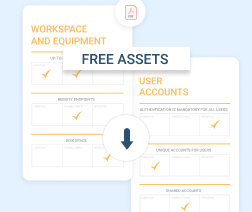Your managed IT bundle is the cornerstone of your business. The bundle comprises software and hardware solutions, services, prices and other conditions of your services. The core of your bundle and the pricing will be the same for most customers. But the devil will still be in the details, since each of your prospects, even if they come from the same vertical, is unique. So, your price and services offer will also be unique.
While you are finding the right solution for the job and trying to define the right pricing, there is one more question down the road – how do you make bundles understandable? Your prospects don’t speak tech and don’t have time to learn it.
In other words, there are quite a few things you need to keep in mind while you are designing your bundle. In this article, we will offer a piece of advice for those who don’t want to overcomplicate things.
How to Define the Bundle: What Is Managed and What Is Billable
Bundling and all-you-can-eat pricing serve to ease the communication between a customer and an MSP. It's easier to set a price per number of services for the period of time rather than to bill for each service and project individually. However, there are situations and projects when you need to keep per-hour billing. One of the key questions here is – where does the managed part of your contract end and the billable time start? Here are some tips to make your life easier:
Support during work hours is always included
Whether you support 8/5, 24/5, or 24/7, you should include this in the bundle. However, if you need to work off-hours – bill it.
On-site time might be billable
Going on-site eats up time and money for traveling. You might not bill your customers for routine installments – new workstations or printers - but you should bill for full-on projects, like the installment of new server racks or network equipment.
On the other hand, if you are focused on the automation and efficiency of your business processes, you can include all off-site services into the AYCE, but bill for all on-site operations, including new hardware installments.
Your services might be billable depending on the usage
If, for example, you provide your customers with cloud backup, think of selling them additional bundles of storage. It does not come free for you, so neither should it for your customers. You can include some standard storage pack - 500GB per user or similar - into your initial bundle but, once the client gets over the limit, bill them for the next storage package.
Create tiers
You can create a tiered bundling system, in which you go from the cheapest tier with fewer services included to the most expensive tier with top-notch coverage. Keep in mind, though, that many customers tend to go for the cheapest options and argue over the need to pay more for other, not-included, services.
Bundling is not enough
Remember, that all your clients are different in terms of required services and IT infrastructure. So, it is next to impossible to create one bundle that will fit them all. Don't give the ”final” prices to your prospect before you inspect their infrastructure. After that, you will be able to fine-tune the bundle, making it perfect for the given prospect.
Further reading MSP Packages: How to Build Your Offer
How to Assess the Environment
As we have already mentioned, your prospect's environment and needs directly affect the way you create the proposition. At this point, you should find a balance between the actual needs of your client and your technical capabilities. Your client might not need state-of-the-art equipment, high-end server replication features, and other advanced services, so don't push them.
Perform an audit of the current prospect’s infrastructure and create a list of all hardware equipment, software solutions, and networking. Your main goal here is to understand how you can improve this infrastructure and meet your potential client’s business needs.
However, stress the importance of the security services in your bundle. In the end, if the client's security is breached, you might end up with reputational losses. And don't forget to include onboarding procedures in the first month's bill. You will spend a lot of time installing and fine-tuning your new client's infrastructure according to your policies. And your time costs.
Assess vulnerabilities and threats, network security, workspace and equipment security, documentation, and more. The pack includes:
- a ready-to-print PDF file
- an Excel file to help create a customizable assessment resource
How Not to Add Complexity to the Environment
We have already mentioned that your proposition should go according to the business strategy of your customer, rather than your profits. Avoid complex and feature-rich solutions when they are not needed. Here are some tips that might help you:
- Listen to your prospects. You should carefully listen to your clients and translate their business language into tech. Your solutions should not be the most efficient in class, they should be the best fit for the job.
- Fix the inefficient infrastructure. Whether left by the previous MSP or created by the client’s internal staff, inefficient or legacy IT infrastructure will be a pain to support. Find the pain points and advise your customers on how you can fix them. Bonus points will be added if you show how the decision will affect the client's operations or budgets. If you know for sure that migration to the cloud will be more price-efficient and lead to better interconnectivity, calculate that and show the numbers to the decision-makers. The chances that you will be heard will rise significantly.
- Document everything. While creating a plan for your client, it's easy to get lost in all the details and peculiarities of their infrastructure. So, you need not only to document their infrastructure but also to document and revise your proposal. You can discuss that proposal with your team later and define if that is really the most efficient solution.
Further reading Guide to Creating MSP Documentation for Customers
Be the Best
Your managed IT proposal is built around a million complex things. But the way you bundle your services and build your proposition for the clients is really one of the cornerstones of being a great MSP. Fine-tune your service proposition, listen carefully to your prospects and clients, investigate their business pain points, discuss the hiccups and struggles of onboarding with your peers, and eventually you will find the balance between the advanced, the needed and the desirable.







